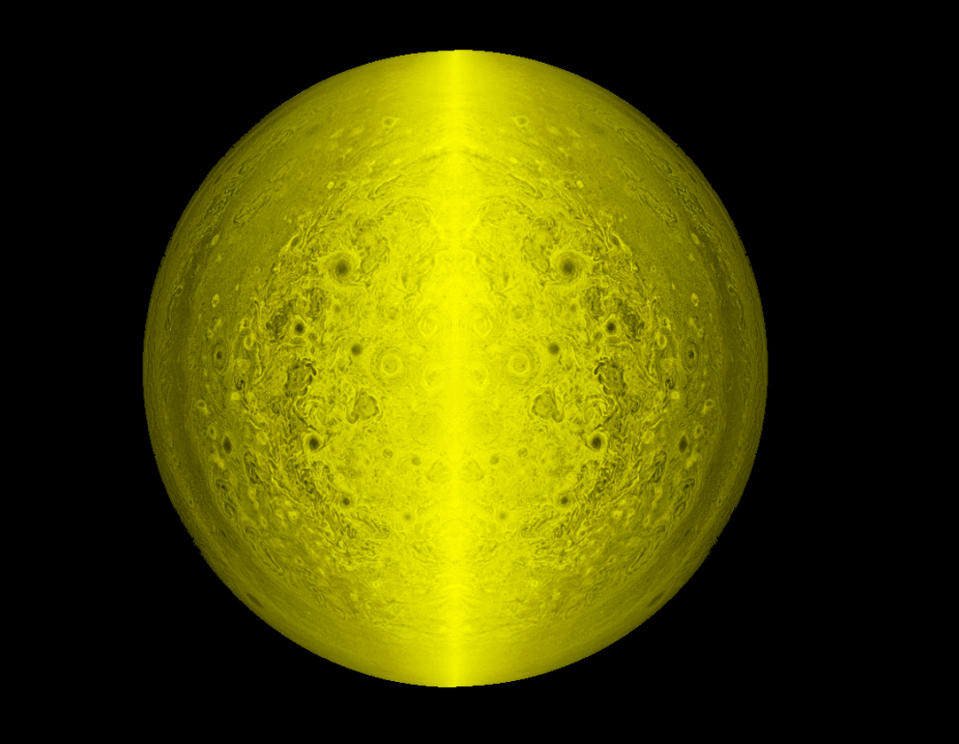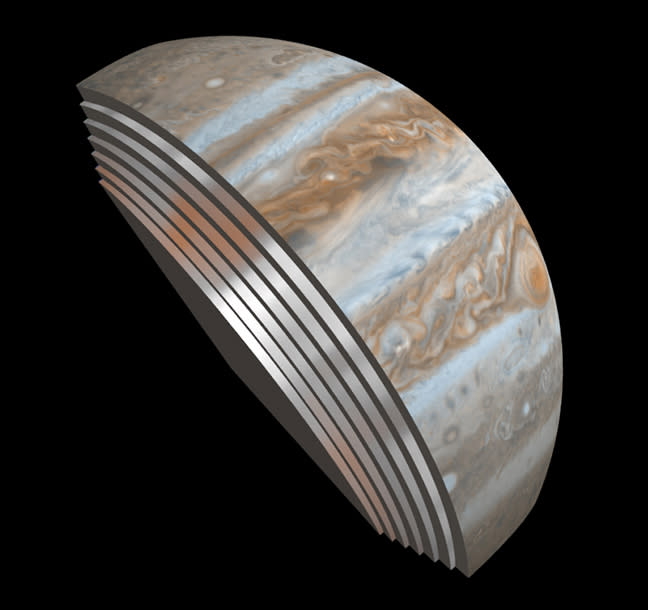The Juno Jupiter Spacecraft Had Some Setbacks

A couple days ago the Juno spacecraft, which arrived at Jupiter this summer, had a malfunction where two engine valves did not open at the proper speed, delaying an engine burn that would have accelerated the spacecraft to decrease the time it takes to orbit Jupiter from about 53 days to 14. Last night, while approaching Jupiter to make a close pass of the planet-only about 3,000 miles above the cloud tops-the spacecraft automatically entered safe mode, shutting down all science instruments.
Unfortunately, this means that no data was taken while Juno was at its closest to Jupiter, as was origionally planned when the acceleration burn was delayed. The spacecraft appears to be functioning properly, though the abnormality it detected that prompted it to enter safe mode is still unclear.

Still, the spacecraft collected some valuable data with multiple instruments before entering safe mode. Citizen scientists have created some amazing images using data from the JunoCam instrument that takes pictures in the visible spectrum. These images can help researchers learn about the turbulent atmosphere of Jupiter, where cyclones bigger than the Earth rage. They're pretty, too.
"The amateurs are giving us a different perspective on how to process images," said Candy Hansen, JunoCam imaging scientist from the Planetary Science Institute, during a press conference. "They are experimenting with different color enhancements, different highlights or annotations than we would normally expect. They are identifying storms tracked from Earth to connect our images to the historical record. This is citizen science at its best."

Juno's Microwave Radiometer (MWR) instrument was also used to peer through Jupiter's surface clouds to see the atmospheric conditions beneath for the very first time. The MWR can see hundreds of miles below Jupiter's upper clouds.
"With the MWR data, it is as if we took an onion and began to peel the layers off to see the structure and processes going on below," said Juno principal investigator Scott Bolton. "We are seeing that those beautiful belts and bands of orange and white we see at Jupiter's cloud tops extend in some version as far down as our instruments can see, but seem to change with each layer."

Even though Juno had the safe mode triggered and had to delay its engine burn, the spacecraft can be expected to continue gathering data and making discoveries around Jupiter for the next year and a half. The next close flyby, with all science instruments on, is scheduled for December 11.
You Might Also Like

